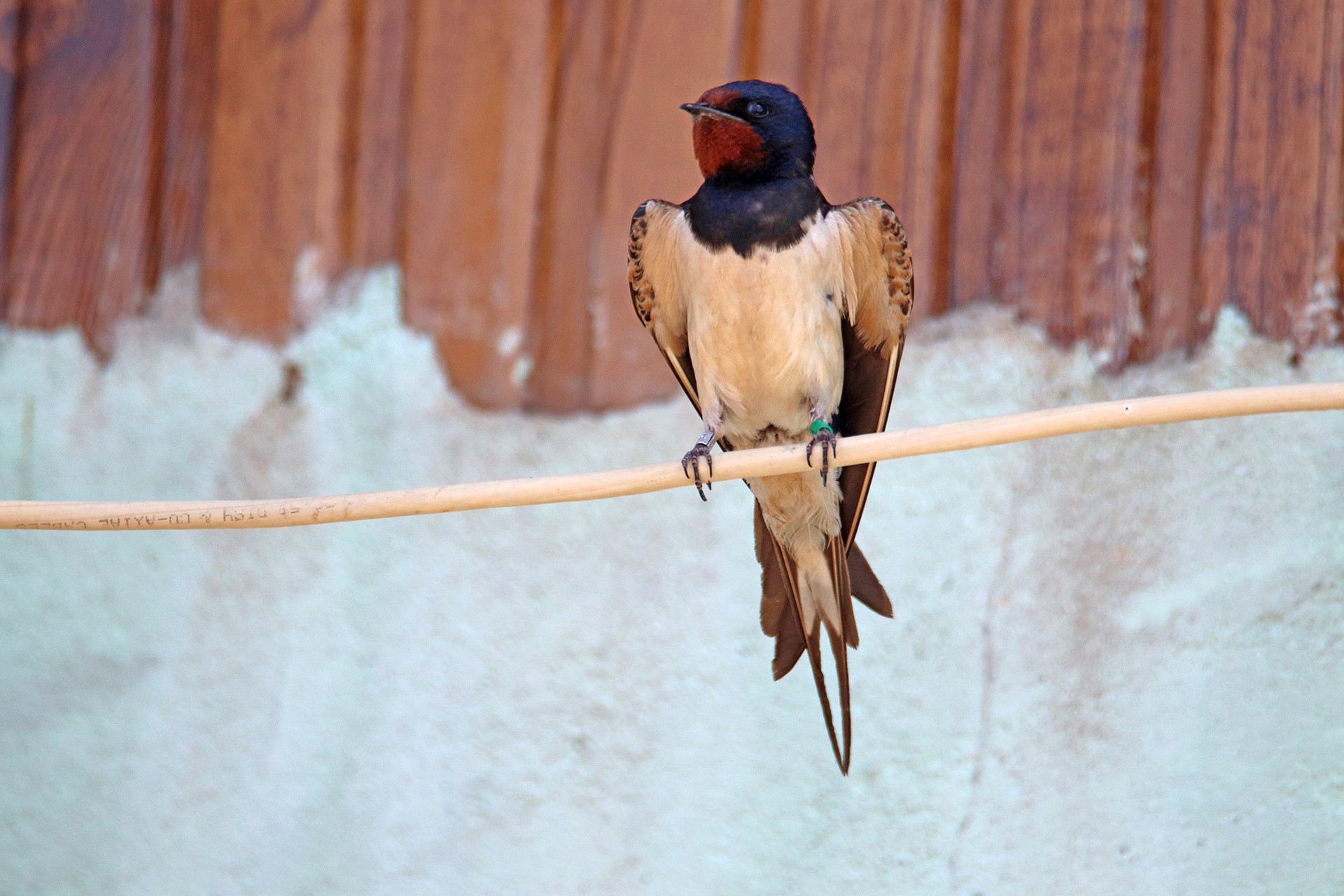“Yahan Katij ka Ol (oal) hai kya? (Do you know of any Barn Swallow nests here?)”
It was this quest we were on, searching for nesting Barn Swallows in the Srinagar Valley in Kashmir. Every day, we would travel to a different village to capture Barn Swallows (record morphometric measurements and collect blood samples) to try and determine their population variability across the Himalayas. The task was only possible thanks to Abdul Sofi Qayoom, Senior Forester, Jhelum Valley Forest Division, Baramulla. He was our guide and gracious host during the time of our fieldwork. Our usual routine would be to reach a place with active Barn Swallow nests, explain our research to the curious villagers, and request their support to capture, document and ring the birds that have taken shelter in their homes.
Barn Swallows (Hirundo rustica) are the most widespread and abundant swallow species on the planet. They breed in Eurasia and North America and migrate long distances to Africa, Northern Australia, and Central and South America. They derive their name from their habit of nesting close to human settlements, specifically in structures like barns across Europe. Over the years, Barn Swallows have adapted to using human settlements for their nesting. In India, they are summer-breeding visitors to mid-elevation Himalayas (1000-2000m above sea level), where they build cup-shaped, mud nests inside human-occupied spaces such as homes and shops.
On my explorations of recording swallow nests across the Himalayas, I have chanced upon boundless stories of the curious relationship between these birds and the people with whom they share their homes. It was as if with every nest surveyed, there was a new story waiting to be unearthed. “Arey pehle aap chai pijiye, kuch khayiye, phir dikhayenge aapki Katij!”. Such is the hospitality of the Kashmiri people that when a stranger enquires about Barn Swallow nests, their response is: “First, have your tea, have something to eat, and then we will show you your Barn Swallow nest!”
This is one such story from our last day of fieldwork in the Himalayas. My PhD supervisor Dr R Suresh Kumar and I woke up feeling quite restless that morning as we were desperate to collect more data before we wrapped up our trip. Accompanied by the forest department staff at Wular Lake, we reached Sopore in the Bandipora District. A short trek took us to a road that led down to a settlement by the lake, facing the snow-clad peaks of the Harmukh mountain range. Our walk ended at a house where we could hear swallows flying at superfast speeds. “Katij!” I shouted, barely able to contain my excitement and relief. While some birds were hunting insects mid-air, some were perched outside on a rope line along the corridor, and others sang to attract potential mates. The house owner, Nazeer Ahmed Dar, led us upstairs to the first floor of an old building adjacent to his home. Inside, the women of the house were busy removing the husk from rice grains for future storage, while right above their heads, swallow parents tended to future generations, hastily feeding insects to famished chicks.
The walls of the room were splashed all over with Barn Swallow poop! The false wooden ceiling and long ledges were perfect for swallow nests. I counted not one, not two, but 11 nests in all! Seeing strangers amidst familiar faces, the adult birds rushed outside through the window that looked out at the lake. Only after making sure that we meant no harm did they return to attend to their fledglings.
While my colleague Rajdeep Mitra and the forest staff set up the mist nets and ringing kit, I enquired to Dar about the history of Barn Swallow nesting in his home. He recalled that they had always been around. “Once the house was built, the swallows moved in along with us,” he said. We explained the need to ring the birds to Dar, and once he understood that we meant no harm, he was happy to allow us to do our job. It was a sort of permission or consent that we required from the swallows’ human hosts.
But Dar, being so attached to “his birds”, didn’t leave us alone even for one second. He carefully watched us as we took measurements and marked the birds with a coloured and numbered metal band according to their sex and age. For the locals, people visiting their village to ask them about the Barn Swallows that they see every day was a little odd. For them, the swallows coming to nest every summer was as normal as the sun rising every day. Once it was time to release the birds, we requested Nazeer Ahmed and his family to join us in releasing “their Katij” back to their home, but now fitted with rings.
As we were heading back, I asked Dar where his family lived. To my amazement, he responded with a wide grin, “Ye makaan pehle hamara hi tha, phir dheere dheere itne Katij aane lag gaye to humne saath me ek makaan aur banwa liya aur wahan rehne lag gaye (This was our home before, but over the years, as more and more swallows started to nest here, we built a new house next door and started living there).” Now there are two houses. One for the swallow families and one for Nazeer Ahmed Dar’s family.
Looking at the vast Wular Lake, the abundant insect population made it clear why these birds preferred to nest here. But without the security of Dar's home, the swallows wouldn't be able to successfully raise their families. It is this relationship, nurtured over generations, between Barn Swallows and the people of the Himalayas that sees the summer visitors return every year—a symbol of happiness, luck and prosperity.







